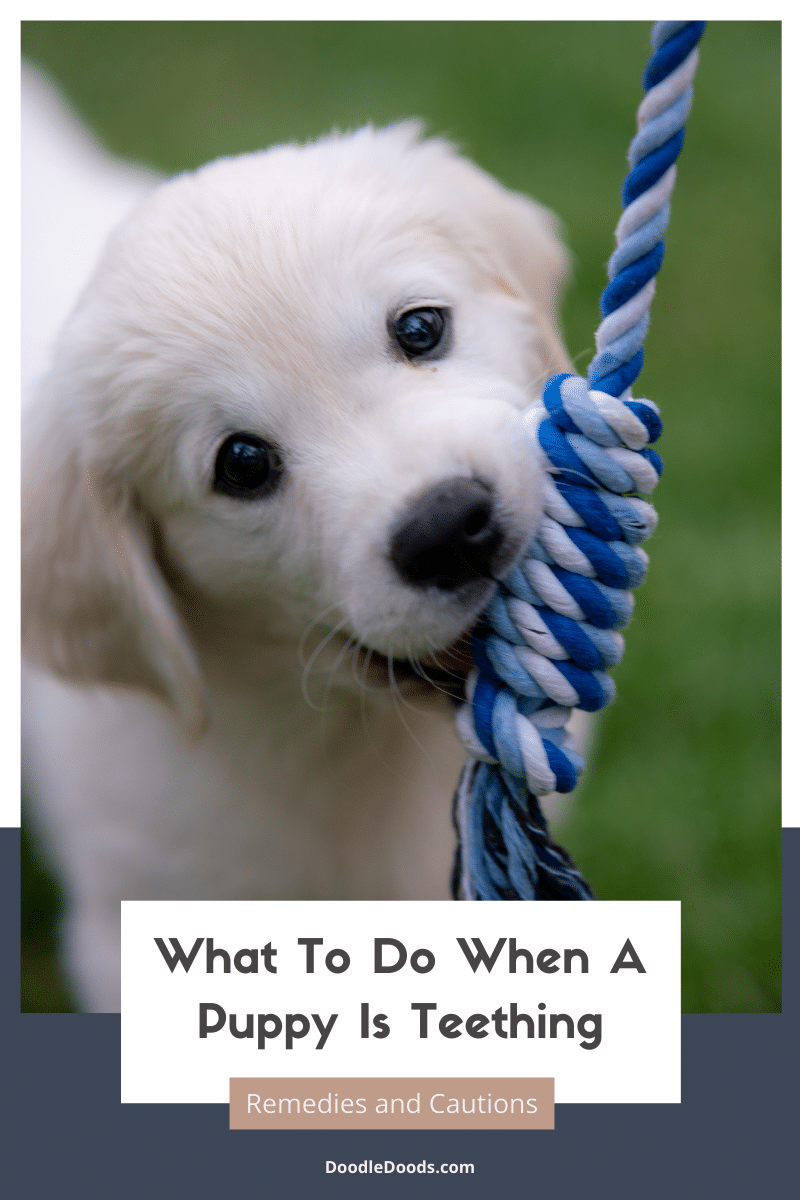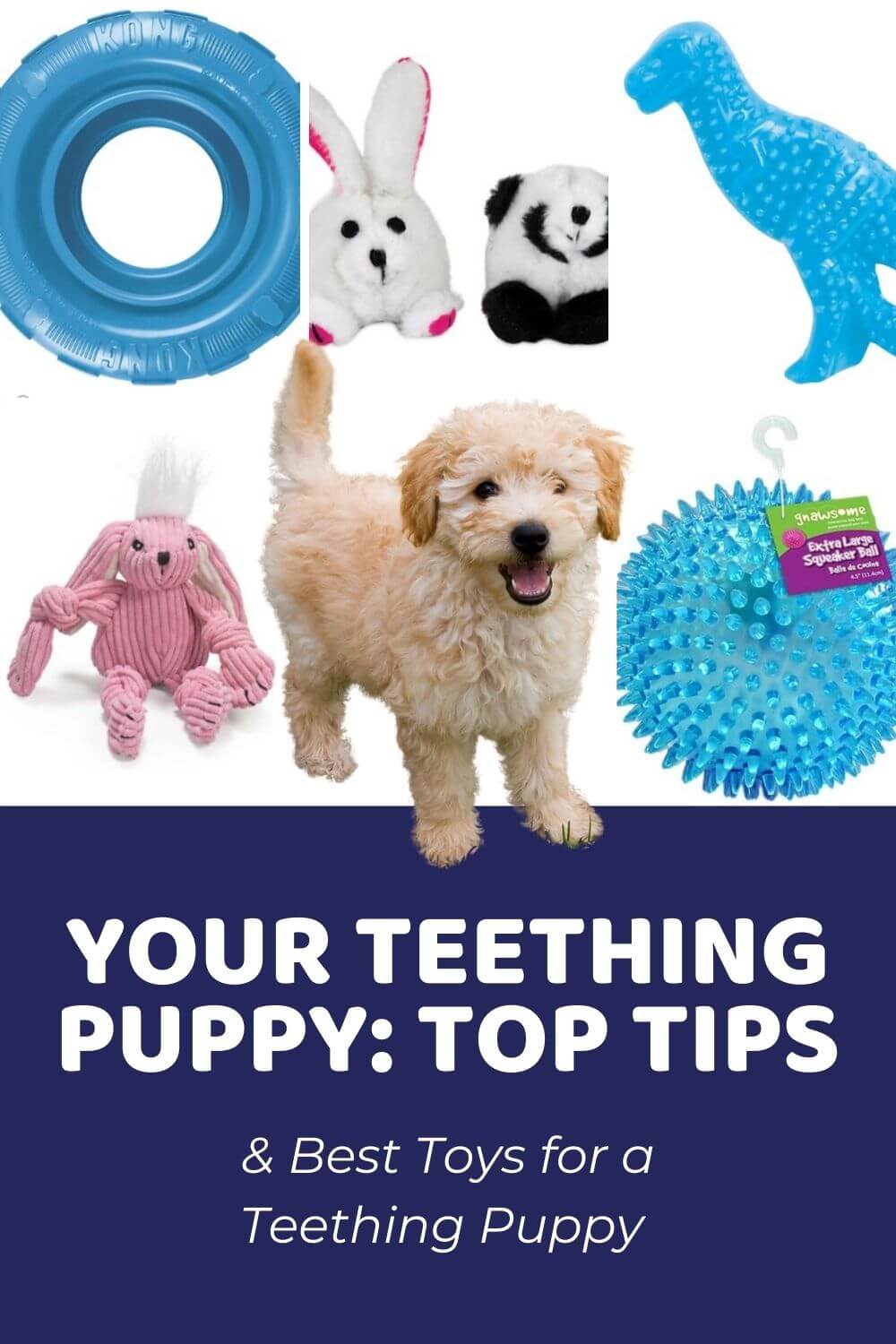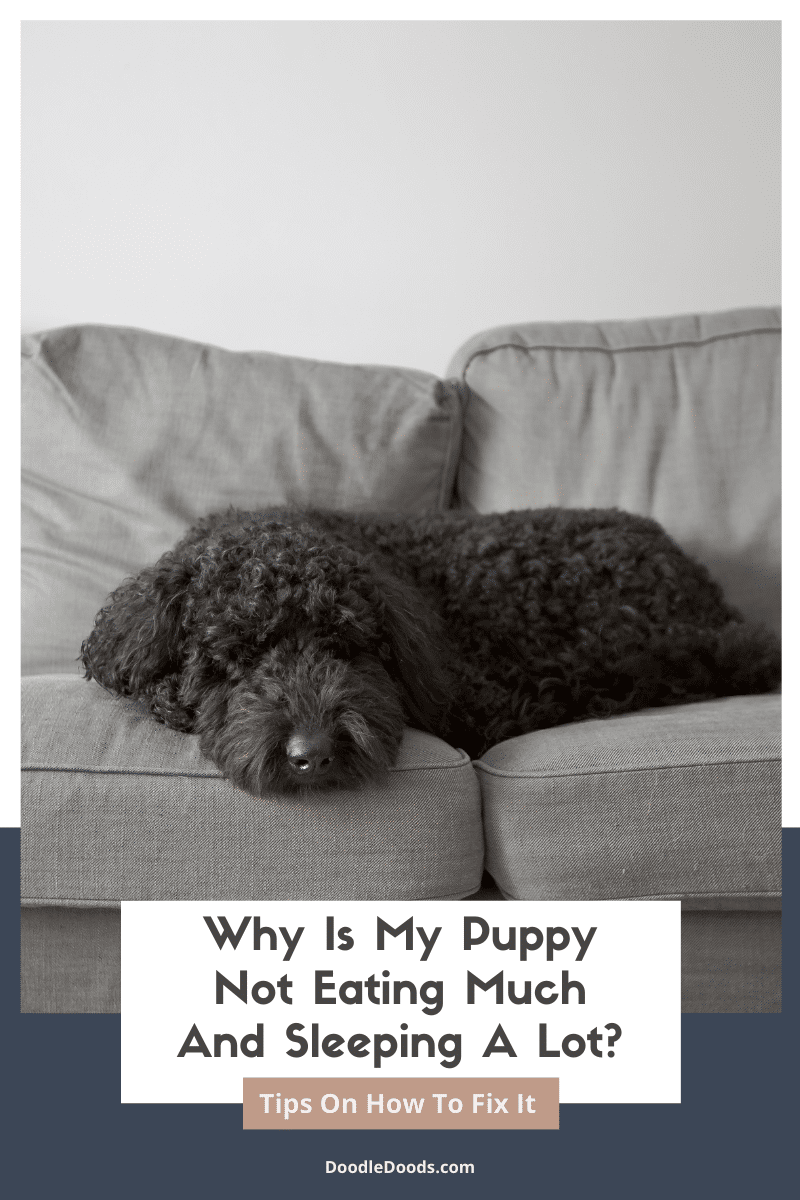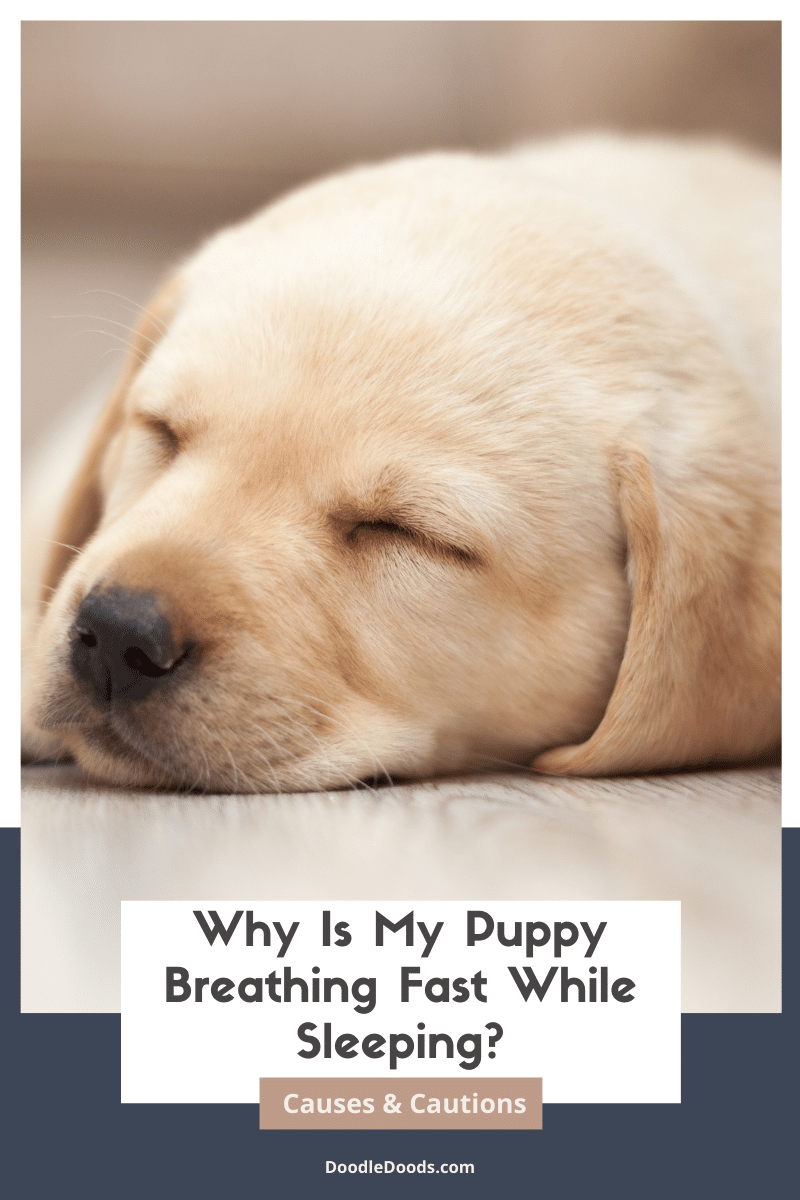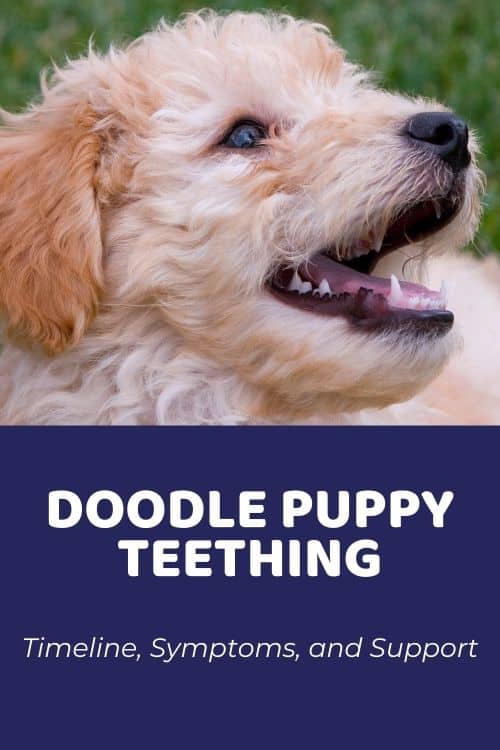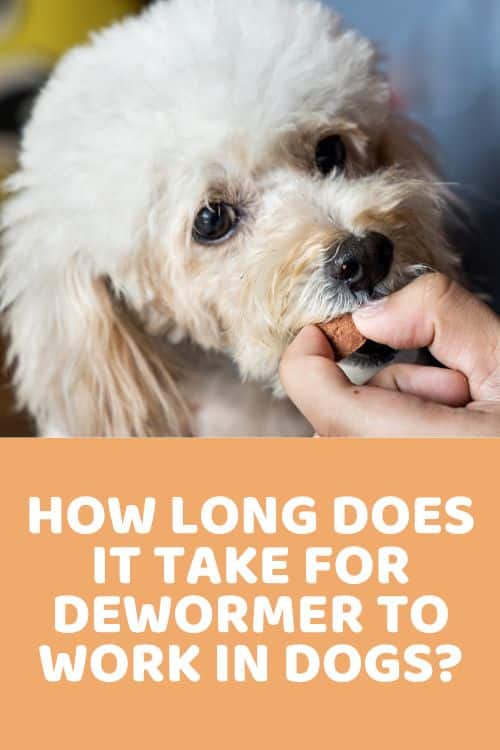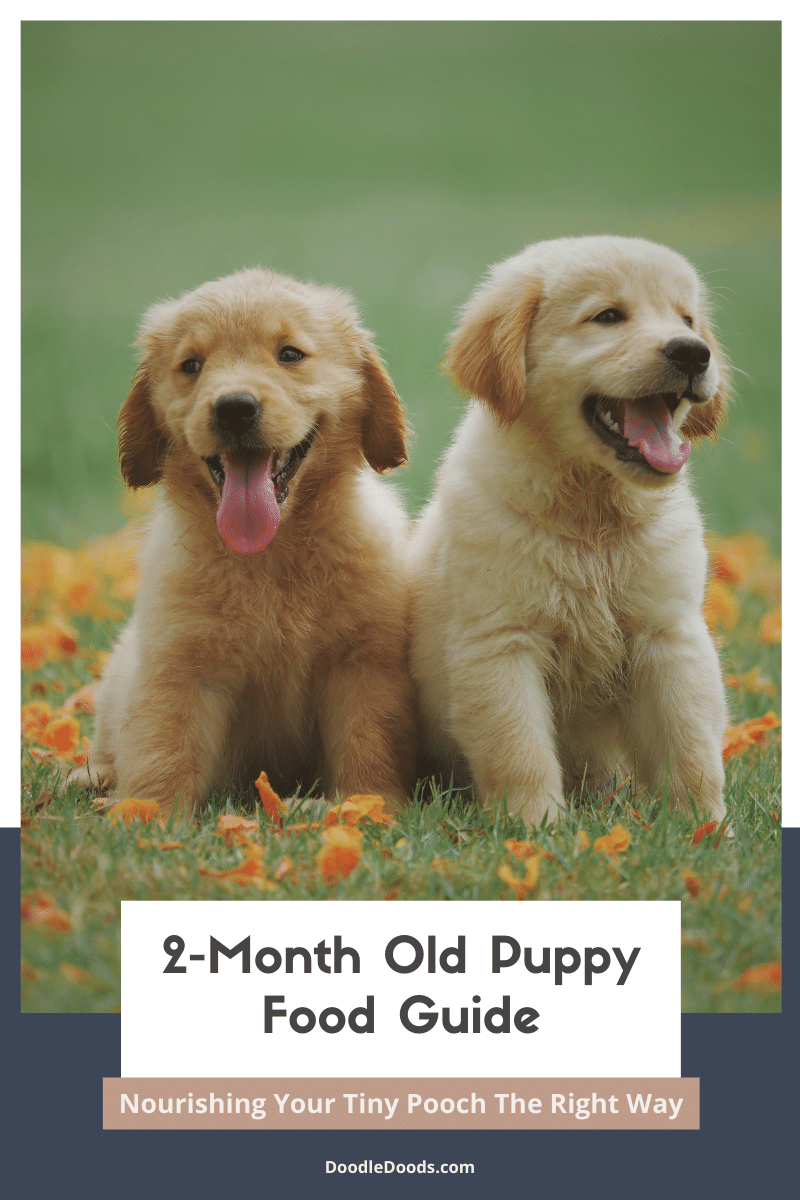Congratulations on your new family member! Puppyhood is such a wonderful time, but what’s even better is having your new best pal by your side through thick and thin. You’ll be enjoying many, many years to come with your little friend, provided that you know how to take good care of them. If you’ve made it to this guide, you’re likely already thinking (or are in the middle) of the dreaded teething phase. In this guide, we’ll discuss what to do when your puppy is teething. Are there any considerations to keep in mind? How can you make teething as comfortable as possible for both your pup and yourself? If you’d like to learn all of the best teething puppy tips, then keep on reading!
Table of Contents
- What To Do When Puppy Is Teething: Introduction
- When Do Puppies Start Teething?
- How Would I Know If My Dog Is Teething?
- What To Do When A Puppy Is Teething?
- What Is The Ideal Dental Care Routine For Teething Puppies?
- How To Stop Teething Puppies From Biting?
- What Is Tooth Retention In Teething Puppies And How To Deal With It?
- What To Do When Puppy Is Teething: FAQs
- What To Do When Puppy Is Teething: Final Thoughts
What To Do When Puppy Is Teething: Introduction
Oh the amazing puppyhood – treasure it while you can, as it’ll fly by in a blink of an eye. Our four-legged pals are absolutely precious (and sometimes extremely annoying) during this life stage. However, an inevitable step in puppyhood is the teething phase. And there’s no way around it! Just like human babies have to go through this process, so do puppies. But with slight differences, of course.
So, it’s best if you’re well-prepared in advance so you know exactly what to expect. Not to mention, you’ll be able to provide your puppy the best care during the teething phase. After all, you wouldn’t want to keep your new pup confused and in pain while they have to go through with it.
Before we share with you some best teething puppy tips and tricks, let’s quickly discuss the basics of when do puppies start teething and how can you know if your new pal is entering the teething phase.
When Do Puppies Start Teething?
Before answering your question “what to do when a puppy is teething?”, we should first discuss the timeline of puppy teething. After all, how can you know what to do, if you don’t even know when teething starts!
It may come as a surprise, but puppies actually start teething pretty early in their life. Some time between 2 and 4 weeks old, puppies will get their first baby teeth. Around the 5 to 6 week mark, they should already have a full set of baby teeth in place. So, if you’re adopting your four-legged friend from a breeder, you’ll likely get a puppy with all of its tiny and extremely sharp baby teeth.
Now, that’s not the end of it. For a few months, your pup will enjoy its baby teeth. But around 3 to 4 months of age, their baby teeth will start falling out. Meanwhile, the adult teeth should start growing in. That’s the most uncomfortable phase for your puppy. But once your puppy gets all of its adult teeth between 6 and 8 months old, it’ll all be a thing of the past.
How Would I Know If My Dog Is Teething?
Puppy teething symptoms are pretty straightforward, as long as you pay attention to the most common signs and changes. The most noticeable of them all is the constant chewing and excessive mouthing. That’s because their gums are all itchy and inflamed, and chewing is the best way to soothe the discomfort.
It’s also common for teething puppies to drool excessively and have red, swollen, or even bleeding gums. Your pup may also become more vocal during this time – how else would you know that they’re not feeling their best, right?
Another obvious symptom is that their baby teeth start falling out. You’ll likely notice some teeth missing from your pup’s mouth, and even find them on your floors and furniture. Some of those baby teeth they’ll just swallow, so you may not even find them anywhere.
Since the whole teething phase can be quite uncomfortable for your pooch, you may also notice that their appetite has decreased. Eating the usual puppy kibble is simply too painful at this time.
What To Do When A Puppy Is Teething?
Now that we’ve covered the basics, it’s time to answer your question “what to do when a puppy is teething?”. Here are our top teething puppy tips that will surely make this somewhat stressful phase much easier for both your puppy and you.
Buy Safe Chew Toys
As we mentioned earlier, excessive chewing is the most common sign that your puppy is teething. The best way to soothe the itchiness and discomfort of inflamed gums is to chew on everything, anything, and anyone. That’s a completely normal thing for puppies – even human babies love to gnaw on stuff when they’re teething.
Naturally, the best way to help your pup during teething is to provide them with plenty of puppy-safe chew toys to gnaw on. Keep in mind that you should pick the chew toys based on your puppy’s size and age. And, make sure that they can actually withstand those sharp baby teeth that can tear into everything.
One benefit of chew toys is that your puppy will direct its chewing needs onto more desirable items, not your TV remote or other household objects. Nonetheless, we do recommend you keep those items out of reach as well, as everything goes during the teething phase.
Additionally, it’s best if you provide your puppy with plenty of chew toys from an early age, as this will help reinforce good habits while they’re still young. On the other hand, if you don’t teach your young puppy which items are appropriate to chew on, and which ones aren’t, it’s bound to cause some trouble in the future once they’re fully-grown.
Our Top Picks:
If you’re looking for a chew toy for your teething puppy, then this freezable treat holding chew toy is an excellent choice. This will provide your pup the much needed gnaw outlet, but it’s also a great way for some extra enrichment to keep their lil’ minds working.
Be sure to check out this guide for more pup-safe chew toys for those days when your puppy just can’t stop chewing. We’ve got some excellent action toys, comfort toys, plush toys, squeaky toys, and even interactive dog toys for you to choose from. Or why not, get them all!
Offer Healthy Natural Chews
In addition to an array of puppy-safe chew toys, you can also offer your pup some natural chews to gnaw on. Some of the best natural chews for teething puppies include rawhide, antlers, pig’s ears, and dog-safe jerky.
These tasty natural chews can even last longer than some chew toys and provide your pup with plenty of nutritional benefits as well. Rawhide, for instance, is a great source of calcium and phosphorus that helps support healthy teeth, gums, and bones, while preventing plaque build-up. Plus, it has the same texture as skin or muscle that puppies love to chew on while teething.
Just make sure you purchase natural chews from reputable brands only. This way, you can be sure that they’re free from any harmful ingredients and unnecessary chemicals. And always supervise your puppy when they’re chewing on natural chews, as they can be quite dangerous if not used properly. For example, AKC has some excellent tips that can help you determine whether or not your pup should chew on rawhide.
In addition to that, make sure that the natural chew you choose is appropriately sized, depending on your pup’s breed, age, and size. Furthermore, don’t forget to keep track of your puppy’s caloric intake, as you don’t want them to accidentally overfeed on those natural chews!
Feed Your Dog Frozen Edible Bones
If chew toys and natural chew toys don’t seem to be enough, you might be wondering – what to do with a teething puppy then? Well, there’s an excellent trick to simply freeze those edible puppy-safe bones or chew toys.
If you’ve ever had sore gums, you probably know all too well that frozen foods and ice packs can make a world of difference. The same goes for puppies! For instance, you can freeze these Get Naked Puppy Health Dental Sticks to provide your pup that extra soothing sensation while they chew on them. What’s more, these are specially designed for puppies that struggle with teething pain and soreness. They’re also packed with omega-3 and omega-6 fatty acids, providing your pup plenty of nutrients at the same time.
In fact, there are plenty of food holding chew toys that you can also freeze. This will keep your pup engaged and wanting for more – it’ll take plenty of time to get all of the yummy goodness out of their favorite chew toy when it’s frozen!
Try The Frozen Washcloth Remedy
If the above teething puppy tips are still not enough, you can also give the frozen washcloth method a try. Basically, you’ll take a clean washcloth or a clean t-shirt (the keyword here is “clean”), soak it in plenty of clean water, roll it up, and then freeze it. For some extra nutrients and flavor, you can also soak the clean washcloth in dog-safe bone broth. You’ll find some dog-safe bone broth recommendations in this guide here.
This is an excellent option if you don’t want your puppy to consume any extra calories, yet want to provide them with a soothing frozen sensation. Just make sure to always keep an eye on your pup if you do decide to follow this method. You want to make sure that your puppy only chews on the frozen washcloth when it’s actually frozen. Once the washcloth has thawed, it can become extremely dangerous if your pup ingests it. Especially considering how sharp their teeth are.
Keep Your Puppy Occupied
What to do when your puppy is teething? Keep them occupied, of course! Keeping your pup busy with its daily routine is one of the best ways to keep their mind off of the discomfort they’re experiencing during teething. And as experienced dog owners know, a busy and tired dog is a happy dog. So, if your pup has plenty of things to do throughout the day and a routine to follow, they’re less likely to resort to destructive behaviors, such as excessive chewing.
Your puppy’s daily routine should consist of set mealtimes, naps, bed time, and bathroom breaks. You also want to fit in plenty of playtime, training, and socialization. All of this will massively contribute to your pup’s overall development and confidence, but also provide that much needed physical and mental enrichment that’s absolutely necessary for any and all puppies.
If you need some extra guidance on how to provide your puppy with plenty of enrichment, be sure to check out our in-depth guide on enrichment ideas, toys, and activities for dogs and puppies.
Consider Soft-Mouth Training
Soft-mouth training is an excellent method if you don’t know what to do when a puppy is teething and keeps on biting and chewing, even causing you pain or serious damage to your precious belongings. This method is all about teaching a puppy that even though they might chew and mouth on stuff, they can’t apply too much pressure to cause damage. Hence the name “soft mouth”.
In a nutshell, the soft-mouth training, also known as bite inhibition, is meant to teach your puppy the appropriate boundaries when biting and chewing. The goal here is to teach your puppy that it’s not appropriate to apply too much pressure when biting. It’s your responsibility to teach your pup when they apply too much force when biting. For that, you need to send your puppy a clear signal, such as saying “ouch” or withdrawing from the situation when they use too much force when biting you.
Needless to say, any sort of puppy training requires a lot of patience, consistency, and positive reinforcement. You don’t want to send your puppy mixes signals when doing this! However, you should always reward them with treats and praise when they respond appropriately. Although, some pups have a naturally soft mouth and may not even require this sort of training. But it definitely won’t hurt to enforce good behaviors!
In case you need some extra help in soft-mouth training and bite inhibition, we recommend you check out the Online Puppy School by Baxter & Bella. You can cover this extensive training program from the comfort of your own home and at your own pace. It includes over 75 lessons and hundreds of how-to videos, even tons of resources, articles, and checklists that you can print off.
Teach Good Chewing Habits
The puppy teething phase is an excellent time to teach your puppy good chewing habits, and for many reasons. First of all, the sooner you start teaching your puppy which items are appropriate to chew on, and which ones aren’t, the more it’s likely that they’ll learn good behaviors and carry them into adulthood.
Secondly, this is a great time for you to bond with your new four-legged best friend, as you’ll be by their side when they need it the most. Imagine how you’d feel whilst teething – it sounds pretty scary to be in this much pain and discomfort! Having you by their side is surely going to only make your bond stronger and make your puppy feel loved and cared for.
Feed Your Pup Soft Foods
As we mentioned earlier, puppies may even lose their appetite when teething. It’s only logical, as we won’t feel much of an appetite either when dealing with sore and achy gums. So, if your puppy isn’t keen on eating its usual puppy kibble, try offering them some soft foods, like wet puppy formulas. Not only will these spare your puppy’s inflamed gums from the added pain and pressure, they also tend to be more appetizing due to the stronger smell.
Another option would be to soften the dry puppy kibble with clean, filtered, and warm water. This is also a great way to make their usual food a bit easier to eat, but also enhance all the aromas coming from the kibble.
What Is The Ideal Dental Care Routine For Teething Puppies?
The teething phase is an excellent time to introduce your puppy to a proper dental hygiene routine. Although you may think that there’s no point taking care of the baby teeth anyway, as they’re going to fall out in a matter of weeks or months, that’s actually not the case.
We cannot stress enough how important it is to start with training and routines as soon as you bring your puppy home. The same goes for your pup’s dental hygiene routine – the sooner you start, the more confident they’ll feel. What’s more, even puppies with baby teeth can develop oral health problems. It’s better to be safe than sorry!
One great way to promote your puppy’s oral health is by providing them with plenty of dental sticks and dental treats. These yummy treats are designed to prevent plaque build-up and promote healthy teeth and gums. Of course, they’re also tasty, which means that your puppy will enjoy gnawing at them.
Another thing we recommend you do is to start brushing your puppy’s teeth. If your puppy doesn’t have all of its adult teeth yet, it’s best if you opt for extremely soft puppy toothbrushes, such as the ones you can place around your finger, as they won’t irritate the gums as much. But once your pup has gotten its full set of adult teeth, you can graduate them to a more traditional-looking dog-safe toothbrush.
Don’t forget that you should only use a toothpaste that’s specially designed for dogs! Human toothpastes can be extremely dangerous for dogs, as they tend to contain ingredients that are harmful for our canine pals. The same goes for toothbrushes – only use products that are designed for dogs, as they’re much gentler.
How To Stop Teething Puppies From Biting?
What to do when a puppy is teething and just won’t stop biting? For starters, you need to put in the effort to teach your puppy bite inhibition and soft-mouth training. This is key to getting your best pal to understand what behaviors are expected of them. How else will they learn?!
Another thing is to provide your puppy plenty of chew toys and natural chews to gnaw on. These are also excellent for redirecting their attention whenever they start to excessively bite on items or even your hands.
You should also set aside time for obedience training and basic commands, such as “off”. Basic commands are essential for any pup anyway, so don’t underestimate the value and power of this type of training. Basic commands are vital to teach your pup how to behave both behind the closed doors at home, but also outside amongst other people and pets.
For detailed instructions, head out to our guide on How To Stop A Puppy From Biting.
What Is Tooth Retention In Teething Puppies And How To Deal With It?
Tooth retention, also known as persistent deciduous tooth in teething puppies, is a condition where a puppy’s baby teeth don’t fall out and instead get stuck behind their adult teeth as the adult set comes in. Essentially, the baby tooth will hold the place of the adult tooth. However, as both sets won’t be able to fit into one spot, it’ll cause the adult teeth to grow into abnormal positions. It can also pave the way for a host of other issues.
Tooth retention can lead to pain and mouth soreness, as well as difficulty eating or drinking. Moreover, it can cause serious problems, such as abnormally positioned adult teeth and abnormal bite, and even dental health diseases, such as gingivitis and periodontal disease. As there are two sets of teeth in place, the food is more likely to get stuck and the bacteria will start to spread.
If you notice that your pup has two teeth in one spot, it’s important that you contact your vet as soon as possible. Only they will be able to assess the most suitable treatment to avoid any further complications. For this reason, you should keep an eye on your puppy’s teeth throughout the whole teething phase. The sooner you notice any issues, the easier the treatment plan will be. Depending on the severity of the tooth retention, your vet might suggest extraction – this is usually done under general anesthesia for your pup’s safety and comfort.
What To Do When Puppy Is Teething: FAQs
So, what to do for a teething puppy to make this inevitable stage as comfortable as possible? Firstly, make sure you have plenty of chew toys for your pup to safely chew on. This will naturally help them soothe the itchiness and pain in the gums. You can also utilize frozen chew toys, natural chews, or try the frozen washcloth method to soothe the pain and discomfort. You can also freeze their favorite treats to alleviate the pain.
The most common symptoms of puppy teething include chewing and mouthing. You might even notice some baby teeth missing from your pup’s mouth, or find them on the floor or on the furniture. However, that’s not always the case. Your puppy may also have red, inflamed, and sore gums, and they may experience loss of appetite due to the pain and discomfort. Additionally, some puppies develop a low fever during the teething phase.
The key to stopping your teething puppy from biting is to teach them which items are appropriate to chew. You should also teach your puppy bite inhibition that’s going to help your pup understand how much force they can apply when biting your hands, for example. (Although ideally you should teach your puppy not to bite your hands in the first place). Our guide How To Stop A Puppy From Biting has some excellent methods for this very purpose.
Puppies generally stop teething somewhere between 6 and 8 months of age. By then, they should have all of their adult teeth in place.
What To Do When Puppy Is Teething: Final Thoughts
Teething is a normal and necessary part of your puppy’s growth and development, but nonetheless, it likely won’t be the most pleasant experience for either of you. We hope this article managed to answer your question “what to do when puppies are teething?” so that you can be fully-prepared for this crucial life stage. Most importantly, be sure to always keep an eye on your pup and their overall health and wellbeing, so that you can provide them with the best of care throughout the teething phase. And if you’re ever in doubt, don’t hesitate to reach out to your vet to make sure that your puppy is growing in the healthiest, best possible way.
Learn How to Care for Your Doodle Puppy!
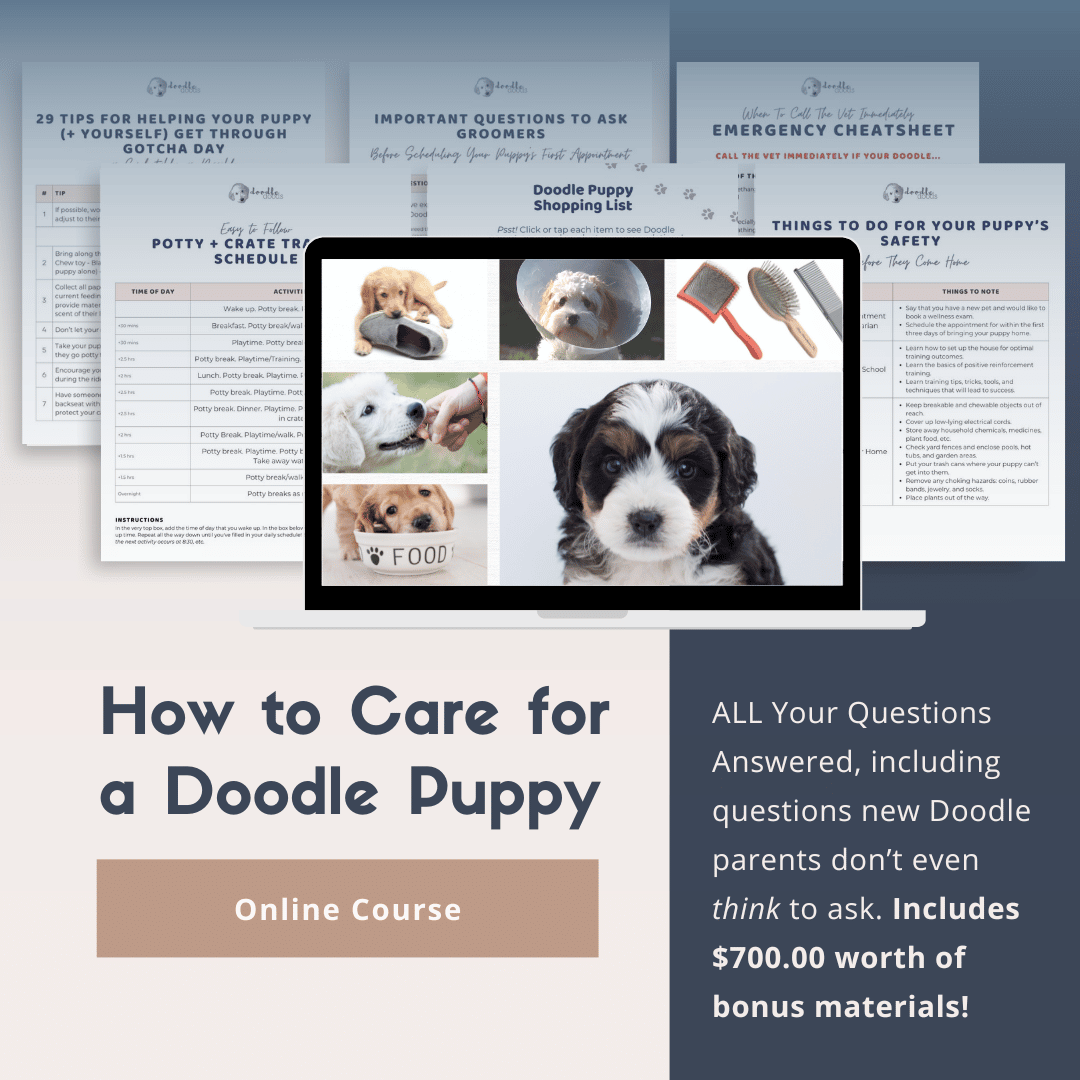
Perfect for first-time Doodle parents, get ALL your questions answered, including questions new Doodle parents don’t even think to ask.
Plus, get $700 worth of Bonus Materials for FREE, including:- Doodle Parenthood Community and Support Group ($190 value)
- Doodle Puppy Growth Tracker ($20 value)
- EMERGENCY Cheatsheet: When To Call The Vet Immediately ($50 value)
- HELP! Button ($145 value)
- And SO MUCH MORE!

